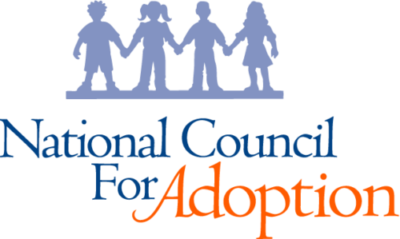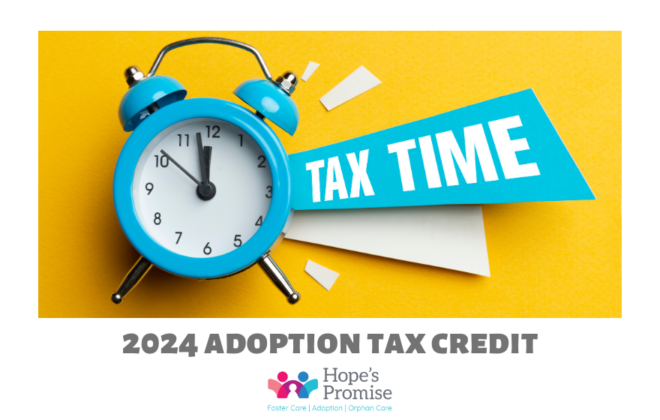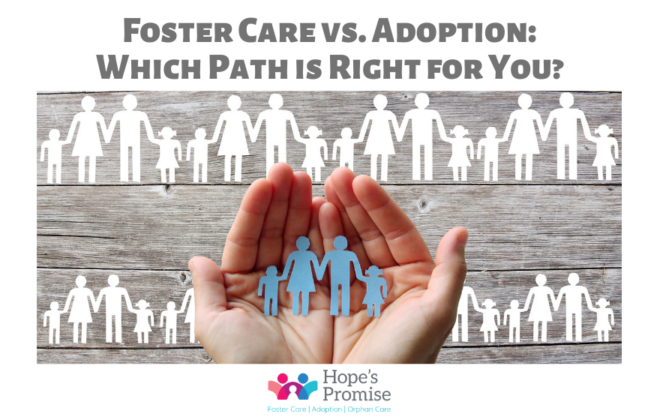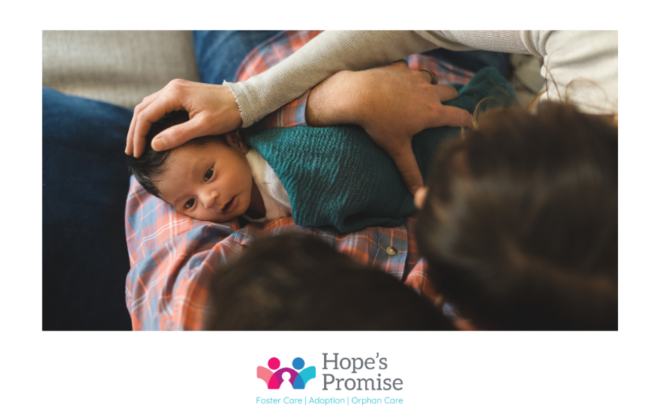The Effects of Adoption on Biological Siblings
BY: JANA HUNSLEY
My life changed completely when adoption became part of my story. Adoption encouraged me to become more empathetic, compassionate, understanding, and mature. Adoption led me to a life lived intimately with trauma and its effects. And it pushed me to pursue the career I have today.
And yet, I am not a member of the adoption triad — I am not an adoptive parent, an adoptee, or a birth parent. I am a sibling. I became a sibling to seven children who were adopted into my family when I was a teenager.
The majority of adoptive families do not consist of just one adopted child and the adoptive parents1 – but we often treat them as such. Almost all treatments and interventions for adoptive families are focused exclusively on the needs of the adopted child.
I became a post-adoption therapist to help children similar to my own siblings. I planned a career that focused on helping parents understand and support their children who had experienced early-life trauma. But I soon realized that we, as the adoption community, were missing something important: As I worked with adoptive families who were struggling post-adoption, I met adoptive siblings who had similar stories to my own, and I searched for resources to help these members of the family but found nothing. All I could do was share my story and what I believed would have helped me.
My story is the “both/and” kind of story. I love my siblings, and — at the same time — I felt invisible as my parents focused all their attention on my siblings’ needs. I still loved that adoption was part of my family’s story, and I became like a third parent in my family to help manage the chaos. I understood the root of my siblings’ needs, and I also felt like I could not have any needs because my parents were already overwhelmed, stressed, and burdened.
I thought it was just me, but when I became a post-adoption therapist and saw other siblings struggling in the same ways I had, I soon realized the problem was more common than just my family’s experience. The struggles I experienced as an adoptive sibling were the same struggles of many siblings by adoption, but it seemed that no one in the professional adoption community was cognizant of the impact adoption might have on other children in the family, let alone actively developing strategies and interventions for them. The prevailing assumption seemed to be that these siblings were unaffected by the addition of a child or children into their family and should be able to work out their struggles by themselves. Although certainly unintended, it was as if I were invisible, and my needs were treated secondary to the needs of my siblings and/or my parents.
A few years later, I started a doctoral program at the Karyn Purvis Institute of Child Development at Texas Christian University. I knew the adoption community needed more education about the adoptive sibling experience, but I did not want to generalize my personal experience to be the experience of all adoptive siblings. To learn more, I conducted a study on the experiences of adoptive siblings with the hope of initiating the conversation with the fuller adoption community. Findings from this study are presented in the next section, followed by tips and strategies to prevent these experiences and/or provide support for adoptive siblings who may share some of these experiences.
The Adoptive Sibling Experience
I conducted a study of 182 adult adoptive siblings and asked them to answer questions about their experience in their families when they lived in the home. While the study participants consisted of biological children in adoptive families, it should be noted that any child in an adoptive family can have the experiences described here. From my clinical work, I have learned that there tends to be one member of the adoptive family who has the most externalizing needs — which often can be traced to early-life trauma – leaving the other children in the family, both adopted and biological, in the role of adoptive sibling. This means that a child can be adopted and have the duel needs of an adopted child while also experiencing life as an adoptive sibling.
Several themes emerged from the data, but the most critical themes from their experience post-adoption are detailed below:
Invisibility
One of the more common themes was invisibility. Adoptive siblings often feel invisible in their families, as if their parents do not even see them anymore. They feel pushed to the side or rejected. Left alone long enough, adoptive siblings’ feelings of invisibility can become pervasive. They can begin to feel as if no one truly sees them. Just as we know adopted children can internalize and struggle with feelings of not being good enough, loveable, or valuable, adoptive siblings can struggle with similar emotions.
How do these feelings of invisibility develop? Asking this question is not intended to assign fault to any member of the family but rather to foster understanding about how it happens. Awareness can result in change that benefits the entire family. Bringing a child into the family can be an all-consuming transition as each member adapts. Parents are often focused on the adjustment of the adopted child and do not have the capacity to attend as consistently to the other children in the home. This can lead an adoptive sibling to feel invisible. If parents continue needing to focus primarily on the needs of the adopted child, this relational pattern can become chronic. The parents may unknowingly tell themselves that the adoptive siblings are okay, that they do not have any emotional issues, or that they should be able to manage well enough without their support. The adoptive siblings interpret this to mean that they are not as important, their needs are less critical than their adopted siblings’ needs, or their parents do not see or value them as much as the other sibling. Left unchecked, these feelings of invisibility can lead to struggles in knowing their own value and worth, and therefore impact many relationships in their life.
Parentification
Another common experience for adoptive siblings is parentification, defined as a child acting in a role of a parent. Adoptive siblings can experience parentification in two ways: operating as an emotional support for their parents or acting as another parent to their siblings. Sometimes, the sibling loves this role – they love acting like a mom to their adorable little siblings or feeling important and valued through meeting needs in the home. Other times, adoptive siblings resent this role – they believe they have no choice but to act as a parent because there is so much stress in the home or they think their parents are not capable of handling all of the stress on their own. No matter the adoptive siblings’ view of their parent role, it is not a healthy experience for developing children. Research shows that parentification can lead to mental health issues and relationship issues as an adult.2
How does parentification develop? Adoptive siblings tend to take on this role for a couple reasons. Often, siblings of children who have been adopted have a pre-existing relationship and an attachment to their parents prior to adoption. Attunement and connection are already present when the new child enters the home through adoption. Adoptive siblings are more easily aware when their parents are overwhelmed, burdened, and exhausted. Most aspects of family life shift when adoption occurs, and many times, adoptive siblings are clinging to any sense of past normalcy. One way adoptive siblings do this is by working to have their old parents back – parents who are not overly stressed and weary. They begin to act as a parent in an attempt to decrease their parents’ stress, hoping that their added help will provide their parents some relief and that family life will return to the way it was before the adoption took place. Another reason adoptive siblings assume the parenting role is because they tend to be empathetic to the experiences of their adopted siblings. They are aware of the early-life trauma or loss their adopted siblings experienced, and they want to help meet their needs in order to help them have the best lives they can have. Left unchecked, this parentification role can lead adoptive siblings to believe their worth and value in the family is tied to their ability to help in a meaningful way. If adoptive siblings are not appreciated for their efforts, they can become hurt and resentful of their parents’ lack of acknowledgement.
Peacemaking
Adoptive siblings may also assume a peacemaking role in the family. They put themselves in this role to ease any tension, mediate, and keep the peace in an effort to decrease the stress in the family. Because they can act as both a parent and a sibling, they understand the struggles of both the parents and the other children in the home and can work to bring understanding to both parties. Adoptive siblings may also work to keep the peace by trying not to add to their parents struggles. Through perfect behavior, they aim not to be needy and to care for themselves in order to help their parents. This need to be perfect can also be a coping response to invisibility – if they do not appear to have any needs, it will not hurt as badly that their parents are unable to meet their needs.
How does peacemaking develop? Adoptive siblings are just as impacted by what occurs in the home as any other member of the family. They live in the same home, experience and witness the same daily struggles, are connected to the same members of the family, and are impacted by everything that occurs. Adoptive siblings want their family to be healthy and whole. They want the yelling to stop, the tantrums to end, the stress to be minimized, and their parents’ worried expressions to be replaced with the relaxed expressions they once knew – and they act in ways that they believe will fix what’s broken. Unfortunately, no matter how hard they try, the reality is that adoptive siblings are not capable of fixing their families all by themselves.
Secondary Trauma
Because adoptive siblings live in the same home and are inherently connected to their families, they are deeply affected by what occurs in their families. Adoptive siblings can experience secondary trauma, defined as the exposure to another person who has experienced trauma.3 Not only do adoptive siblings hear the stories of what the adopted children in their family have experienced, but they also often witness the effects of this early-life trauma on their adopted siblings’ brains and bodies on a daily basis. They are exposed to the trauma-related emotional and behavioral problems adopted children can experience. In particularly chaotic homes, adoptive siblings can be traumatized themselves, bullied or made the target of many of the adopted children’s trauma-related emotional and behavioral problems.
This secondary trauma can affect adoptive siblings in different ways. While the exposure can make adoptive siblings empathetic, compassionate, and emotionally mature, it can also cause them to internalize it as their own trauma. They can grapple with the hard things they are hearing and witnessing and, in their developing brains, be unable to make sense of it all. This can cause them to turn inward, keeping their feelings to themselves and not turning to their families for support. Secondary trauma can also cause adoptive siblings to struggle with their own emotional and behavioral problems. They can begin to have similar trauma-related emotional and behavioral problems as the children in the home who experienced early-life trauma.
One important distinction with emotional and behavioral problems is that adoptive siblings sometimes can model the behaviors of the child with the most trauma-related needs in the family. They can see that this child receives attention if they exhibit certain behaviors so if they exhibit similar behaviors, they believe they will also receive attention. This is different from experiencing emotional and behavioral problems due to secondary trauma.
The Adoptive Family System
When I began this research, I thought I was just starting a conversation about the adoptive sibling experience, but I soon realized I was also discovering a new way to view the adoptive family. When we make the effort to understand the adoptive sibling, we can see the adoptive family much more accurately. We know that adoptive parents can be overwhelmed, stressed, burdened, and are often unprepared and unequipped to meet the needs of their family. We know that children who were adopted often experience grief and loss and have experienced early-life trauma that leads to trauma-related emotional and behavioral problems. If we look at the parent and adopted child relationship, we know that adopted children can struggle to trust and receive care, and parents can struggle to consistently give care to a child who does not reciprocate affection – a condition known as blocked care.4 If we factor in the adoptive sibling, they may struggle with invisibility, parentification, peacemaking, and/or secondary trauma. In the relationship between the parent and adoptive sibling, the adoptive sibling struggles to express their needs, and the parent struggles to see or meet the needs. In the sibling relationship, adoptive siblings can be jealous of the attention their adopted sibling receives and resentful of the stress they believe the child has brought to the family, while the child that was adopted can feel inferior to the adoptive sibling and jealous of the favor their sibling experiences.
If we begin to acknowledge the experiences of each of the adoptive family members, we can finally see the adoptive family clearly. We can recognize that the stress and chaos felt in the adoptive family is not caused by adoption or the adopted child; it is caused by issues inherent in the family system. Something is not working in how the family connects, communicates, and relates to each other. However, most of our interventions for families post-adoption are focused on the trauma-related needs of the adopted child and helping this child heal from their trauma. While this is critically important work, if interventions for adoptive families only address the adopted child, not only are we unintentionally placing the blame for the family’s stress on this child, but we are also not meeting the other needs in the family. Without understanding and addressing these needs, the adoptive family will likely continue to struggle.
Improving the Family System
So how do we improve the family system? How do we meet the needs of the adoptive siblings? In the first study I conducted, adoptive siblings reported that they wished their families had more open communication, that they had received more training as a family pre-adoption, and that they all had received post-adoption support. In essence, they wanted a seat at the table and wanted to be able to talk about what was happening. In a follow-up study, I found that adoptive siblings whose families talked freely and openly about their thoughts and feelings had the most cohesive families, the closest sibling relationships, and were the most satisfied in their families. The number of children in the family, age differences, age at adoption, birth order changes, and amount of trauma the adopted child had experienced did not affect the way adoptive siblings viewed their families. It was all about building a home with healthy communication in which the family could talk freely, honestly, and openly about their thoughts and feelings.
Based on these insights, here are some practices parents can implement to build this type of home.
Practice Mindfulness
The foundation of a connected family is mindfulness. This involves being mindful of one’s own mental and emotional states, triggers, and effective regulation strategies. Further, mindfulness also involves being aware of one’s family – being attuned to their mental and emotional states. This means that parents can read when their child is feeling sad, antsy, overwhelmed, angry, etc., and they know what to do when their child experiences these feelings. What their child needs may take time to determine, but all children have needs that parents should be meeting.
In order to have open and honest communication, parents should be present with their family— attuned to their own mental and emotional state as well as those of others within the family. Without mindfulness, parents will have disconnected communication at best and family members who feel like they cannot discuss their needs at worst.
Once this foundation of mindfulness is built, parents can move onto the supports. The next two strategies involve processes done over time to increase conversation in the home, learn how to better communicate, and gain mastery of this type of communication in one’s family.
Model Openness
We cannot expect children to tell us what they are thinking or how they are feeling if we do not model open sharing for them. Parents are often the means through which their children learn. If parents do not share their thoughts and feelings, their children most likely will not share their own thoughts and feelings either. However, if parents show their children it is normal, comfortable, and safe to talk about what they are thinking and feeling, they will start engaging in more open and honest conversation. It seems simple, but can be uncomfortable if sharing feelings is not the norm within the family.
That is why the foundation of a connected family is mindfulness. It is necessary for parents to become aware of what they are thinking and feeling before they can start modeling this openness. Once this awareness occurs, it is easy to notice how often thoughts or feelings are voiced. A good practice is to try to model openness at least once a day. One example is creating a ritual where everyone shares the best part and the worst part of their day around the dinner table. As parents model this openness, they can expect their families to respond by beginning to open up themselves.
Ask Questions
Children need to know their parents care about what is happening in their lives. In order for parents to show they are interested and that they want to engage and connect, they can ask open-ended questions. These can be very simple: “Can you tell me about your basketball game?” “How are you feeling about your final exam?” or “What do you need to make this day better?” The questions can be very basic but should not have simple “yes” or “no” answers. With practice, these questions can create the space for families to talk freely and honestly about what they are thinking and feeling. Along with trying to model openness once each day, a good practice is to try to ask at least one question each day. If families are living in survival mode or are uncomfortable talking about feelings, this can feel impossible. However, it takes practice to form these habits. If families are intentional, it will eventually become second nature.
The following two strategies are tools that can be used in nearly every interaction in the home.
Be Receptive
Being receptive involves hearing what the other person has to say, thinking about it from their perspective, even if there is disagreement — as long as their voice is heard. Being receptive requires empathy and compassion, being able to put oneself in the other person’s shoes. In a family, it is impossible to always agree. There are too many people with different personalities, opinions, and experiences. Sometimes we may start an argument or silence a family member simply because we have not stopped to be mindful and think about the issue from their perspective. To be receptive, a good practice is to pay attention to one’s conversations in the family – are you receptive to what others say? How often do you just passively listen without communicating your sincere interest or concern?
Affirm Preciousness
Children need their parents to affirm their preciousness daily. They are receiving many false messages about their value and worth, and they need their parents to counteract those lies. They need to hear things like, “I love you,” “I’m so glad you’re mine,” “You’re such an incredible kid.” There are no specific words that need to be said; instead, parents can affirm their children by saying what is natural and authentic within their family. If parents are not authentic with their words, then their children will notice and the affirmations will fall flat. Parents may affirm their children verbally, through a note or text message, or in a number of other ways. What matters is that the child consistently feels seen, known, and loved in an intentional and genuine way.
Conclusion
I started my career with the goal of helping children who were adopted heal from their early-life trauma and helping their parents care well for them. I thought I was changing my focus when I began to study adoptive siblings, but I soon learned that was not the case. Learning about adoptive siblings helped me see the whole adoptive family unit more clearly, which allowed me to recognize a critical issue in the adoption community: We unknowingly place undo blame for the stress and chaos in adoptive families on the adopted child and their prior experiences with trauma when, in fact, none of it is their fault. The stress and chaos in adoptive families is a by-product of family issues – a lack of communication, connection, and understanding. Additionally, if we begin to acknowledge and address the needs of adoptive siblings, not only are we making an invisible problem visible, but we are rightfully removing the blame from the adopted child and focusing our efforts on areas that will benefit all members of the family. Understanding the experiences of each member of the adoptive family brings the awareness necessary to recognize the needs of and effectively parent every child, build healthy family relationships, and help every member of the adoptive family feel seen, loved, heard, and valued. Creating these positive changes in families can be as simple as a conversation.
Resources
Karyn Purvis Institute of Child Development:
- https://child.tcu.edu/on-being-an-adoptive-sibling
- https://child.tcu.edu/lessons-from-adoptive-siblings
CATEGORY Adoption Experiences
References
- Vandivere, S., Malm, K., & Radel, L. F. (2009). Adoption USA: A chartbook based on the 2007 National Survey of Adoptive Parents. Washington, DC: U.S. Department of Health and Human Services, Office of the Assistant Secretary for Planning and Evaluation. http://aspe.hhs.gov/hsp/09/NSAP/chartbook/index.cfm
- Hooper, L. M., DeCoster, J., White, N., & Voltz, M. L. (2011). Characterizing the magnitude of the relation between self-reported childhood parentification and adult psychopathology: A meta-analysis. Journal of Clinical Psychology, 67(10), 1028-1043.
- https://www.nctsn.org/trauma-informed-care/secondary-traumatic-stress
- http://www.adoptioncouncil.org/publications/2020/07/adoption-advocate-no-145




